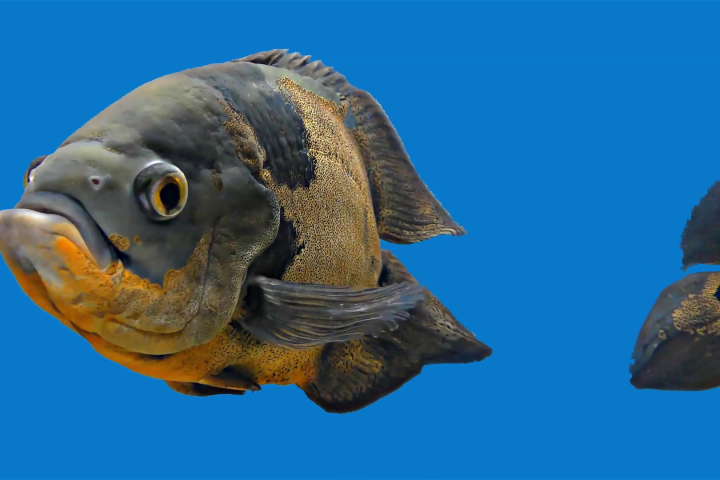'Sad Surprise': Amazon Fish Contaminated by Plastic Particles

Scientists have found the first evidence of plastic contamination in freshwater fish in the Amazon, highlighting the extent to which bags, bottles and other waste dumped in rivers is affecting the world’s wildlife.
Tests on the stomach contents of fish in Brazil’s Xingu River, one of the major tributaries of the Amazon, revealed plastic particles in more than 80% of the species examined, including the omnivorous parrot pacu, herbivorous redhook silver dollar, and meat-eating red-bellied piranha.
The researchers focused on fish in the Xingu because of their rich diversity and breadth of feeding habits. The fish ranged from 4cm to nearly a foot in length, and weighed from 2g to nearly a kilogram.
Analysis of the fishes’ stomach contents identified a dozen distinct polymers used to manufacture plastic items, including bags, bottles, and fishing gear. Most pieces were black, red, blue, white or translucent and varied from 1mm-sized particles to flakes measuring 15mm in width.
“It was a sad surprise because in the initial stage of our research the main objective was to understand the feeding ecology of fish, but when we started analysing the stomach contents we found plastic,” said Tommaso Giarrizzo, who studies aquatic ecology at the Federal University of Pará in Brazil. “It’s alarming because this pollution is spread throughout the Amazon basin.”
The scientists picked through the stomach contents of 172 fish belonging to 16 species. Writing in the journal Environmental Pollution, the scientists describe how 13 of the species had consumed plastics, regardless of whether they were herbivores that fed on river plants, carnivores that survived primarily on other fish, or omnivores. The herbivores may mistake pieces of plastic for seeds, fruits and leaves, while the omnivores are likely to ingest plastics caught in the feathery river plants, called macrophytes, which make up much of their diet. Meanwhile, carnivores such as piranha are likely to consume plastics when they eat contaminated prey.
Marcelo Andrade, also at the Federal University of Pará, said: “It is awful to know that plastic debris is ingested by 80% of analysed fish species, and that many of them are consumed by humans in the Amazon. Plastic pollution is a real threat to humans around the world.”
Overall, 96 pieces of plastic were recovered from stomachs of 46 fish. Tests showed more than a quarter were polyethylene, a material used in fishing gear that is often discarded in rivers and oceans. Others were identified as PVC, polyamide, polypropylene, rayon and other polymers used to make bags, bottles, food packaging and more.
Rivers are responsible for up to a fifth of the plastic waste found in the oceans. Much of the pollution is caused by poor waste management or by rubbish intentionally being dumped in water courses. Over 90% of the plastic debris that reaches open water comes from 10 rivers, eight in Asia and two in Africa.
Giarrizzo said more research was needed to understand the origin of the plastic in rivers in the Amazon and to assess the impact it may have on human health. One concern, he said, is that hazardous chemicals can bind to the plastics found in fish, and so eating them may lead to a build-up of dangerous chemicals in the body.
“Even though the effects of human consumption of microplastics are largely unknown, our findings are a public health concern since the Amazon has the world’s highest per-capita consumption of fish,” he said.
Prof Steve Ormerod, co-director of the Cardiff University Water Research Institute, said: “Although much of the publicity and emphasis on plastic pollution has focused on the world’s oceans, this paper adds to growing evidence that plastics are also a potential risk to the world’s river ecosystems.
“In some respects, these results are not surprising in that the Amazon is thought to carry around 60,000 tonnes of plastic trash every year into the Atlantic, and samples for this work on the Xingu tributary were collected near to Altamira – a city of over 100,000 people. Yet, with individual fish in this study on average having 22%-37% of their gut contents taken up by plastic, there are bound to be concerns about physical or toxicological effects.
“With an increasing number of studies now recording plastic inside aquatic animals, I think we now have to move beyond this descriptive phase into investigations of the key sources of plastic material in rivers, what the fate of this material is in food webs, and far more importantly what the effects are on organisms and ecosystems. This is all critical information if we’re to manage the plastic problem in an evidence-based way.”
